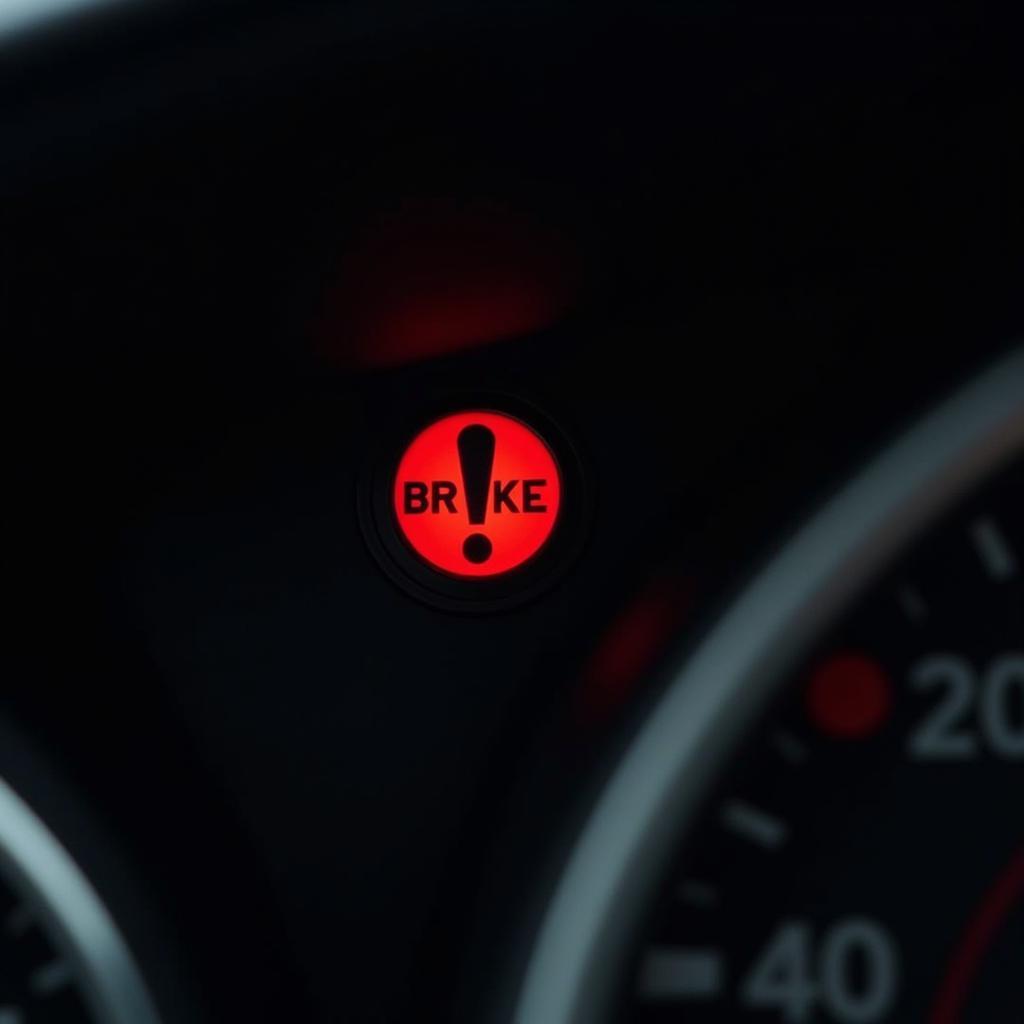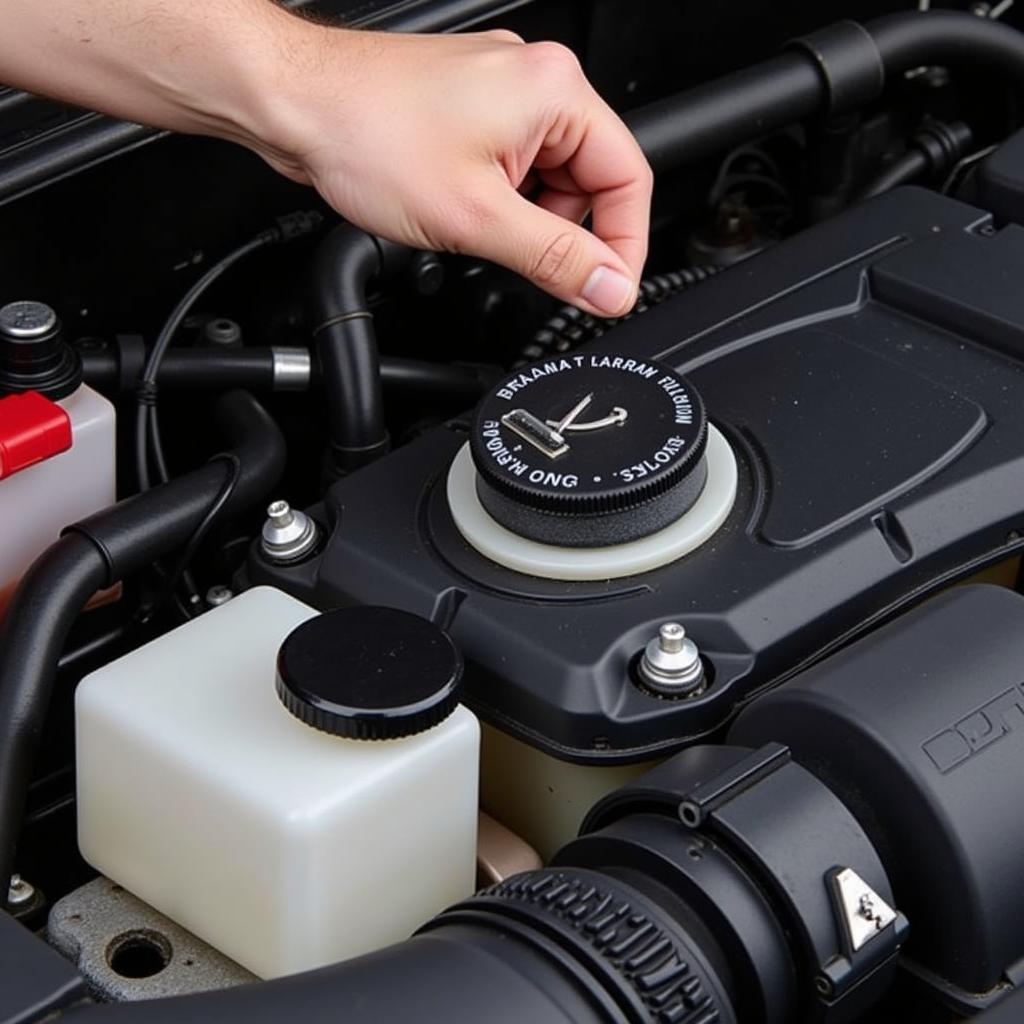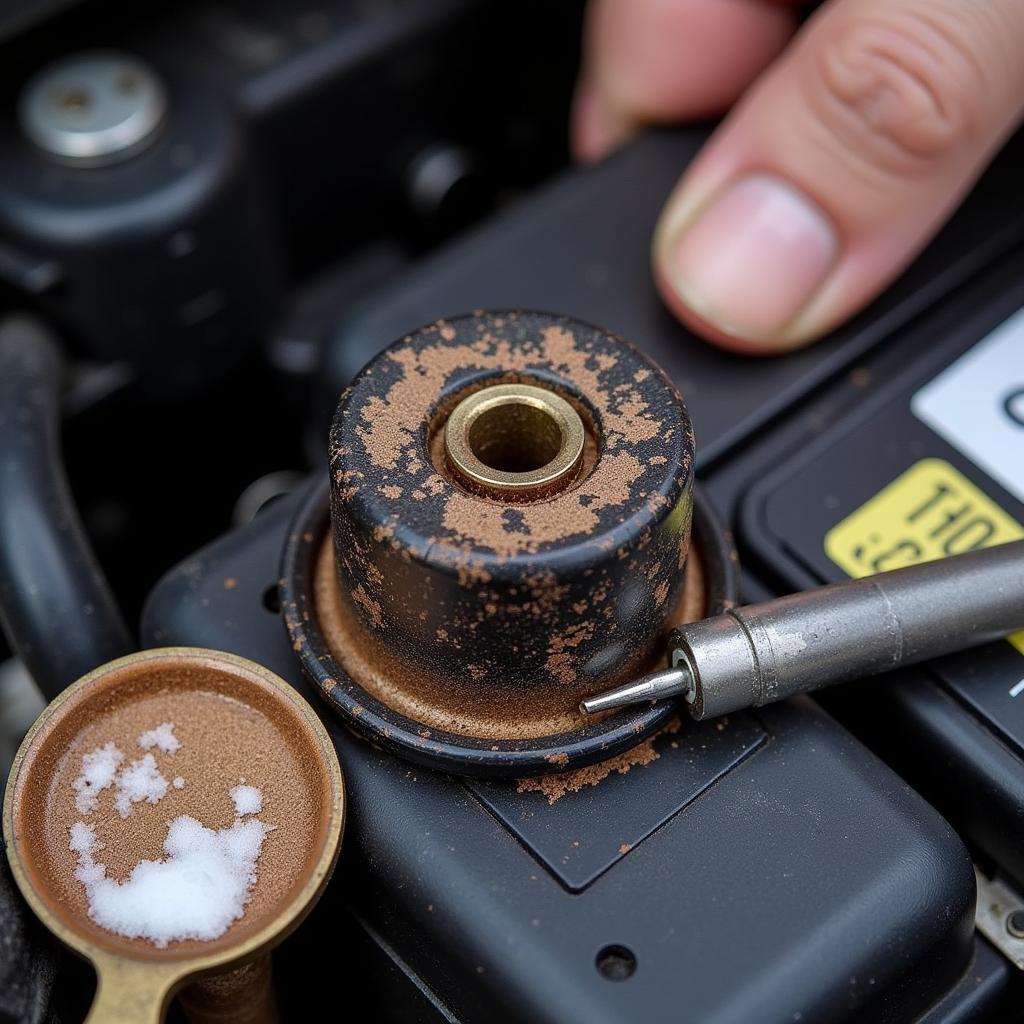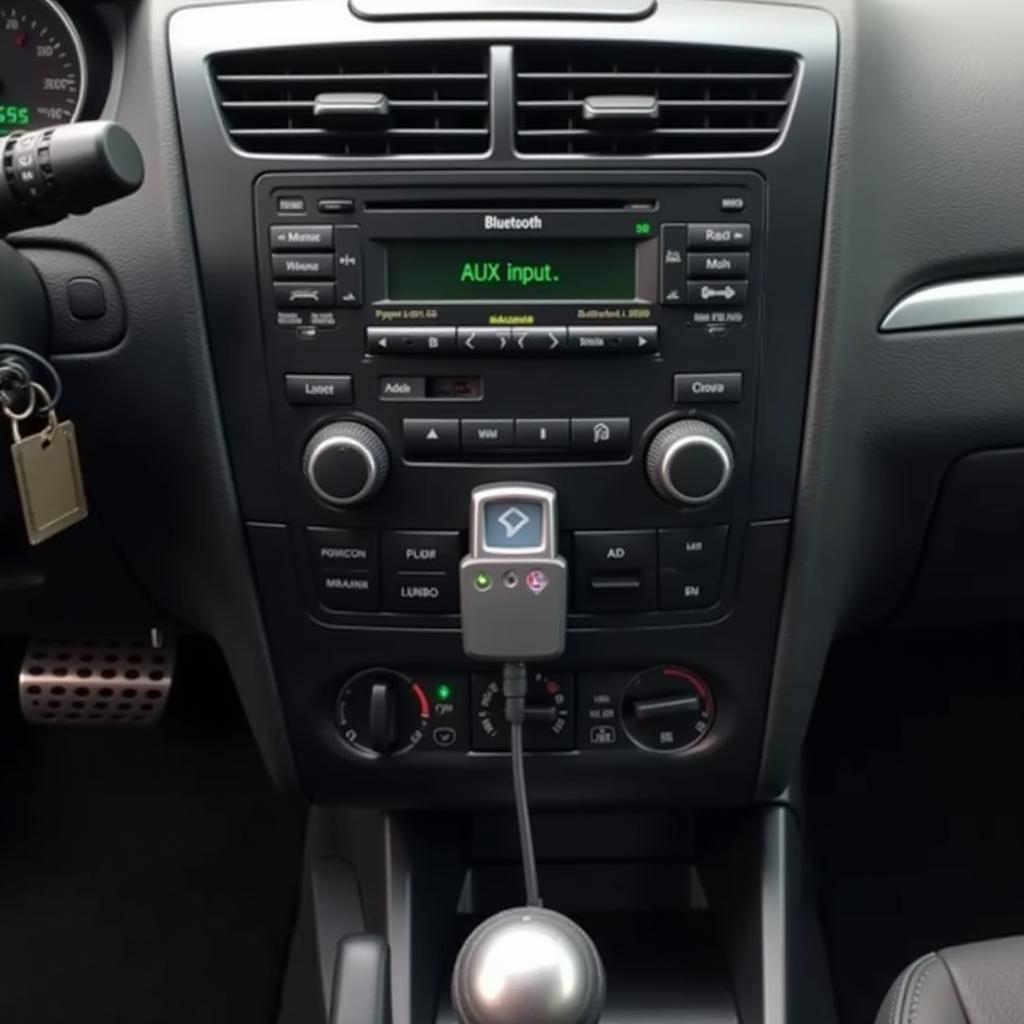The brake warning light on your Ford dashboard is a crucial safety feature. When illuminated, it signals a potential issue within your vehicle’s braking system that requires immediate attention. Ignoring this warning could lead to reduced braking performance and increase the risk of an accident.
This comprehensive guide will delve into the common causes of a Ford brake warning light, troubleshooting tips, and potential solutions.
Understanding Your Ford Brake Warning Light
While the specific design might vary slightly across different Ford models, the brake warning light generally appears as a red circle with an exclamation mark (!) or the word “BRAKE” inscribed within.
 Ford Brake Warning Light on Dashboard
Ford Brake Warning Light on Dashboard
Common Causes of a Ford Brake Warning Light
There are several reasons why your Ford brake warning light might turn on. Here are some of the most common culprits:
-
Low Brake Fluid: This is the most frequent reason for the brake warning light to illuminate. Brake fluid is essential for transferring force from your foot on the brake pedal to the vehicle’s wheels, allowing it to slow down or stop. A leak in the braking system can lead to low brake fluid levels, triggering the warning light.
-
Worn Brake Pads: Brake pads are designed to wear down over time with regular use. When they become excessively thin, the brake pad wear indicator will make contact with the brake rotor, triggering the warning light.
-
Faulty Brake Pad Sensor: In some cases, the sensor itself that detects brake pad wear can malfunction, illuminating the warning light even if the brake pads are still in good condition.
-
ABS Issue: If there’s a problem with your Ford’s Anti-lock Braking System (ABS), the brake warning light may come on in conjunction with the ABS warning light. This could indicate a problem with the ABS module, wheel speed sensors, or other related components.
-
Parking Brake Engaged: While seemingly obvious, sometimes the brake warning light might simply indicate that the parking brake is partially or fully engaged. Always double-check your parking brake before panicking.
 Checking Brake Fluid in a Ford
Checking Brake Fluid in a Ford
Troubleshooting a Ford Brake Warning Light
If your Ford brake warning light comes on, it’s crucial to address the issue promptly. Here are some steps you can take:
-
Check Your Parking Brake: Ensure the parking brake is fully released. If it’s even partially engaged, it can trigger the warning light.
-
Inspect Brake Fluid Level: Locate the brake fluid reservoir under the hood. The reservoir will typically have a “DOT 3” or “DOT 4” marking indicating the type of brake fluid used. If the fluid level is below the “MIN” mark, add the correct type of brake fluid to bring it up to the “MAX” line.
-
Visual Inspection: Look for any signs of brake fluid leaks around the brake lines, calipers, and wheel cylinders. If you notice any leaks, it’s crucial to have your braking system inspected by a professional mechanic immediately.
-
Consult a Professional: If the brake warning light persists or you’re unable to identify the cause, it’s best to seek professional help. A qualified mechanic can diagnose the problem accurately using specialized diagnostic tools.
Remote Software Solutions for Ford Brake Issues
In some instances, the brake warning light might be related to software glitches within your Ford’s electronic control unit (ECU).
“Modern vehicles rely heavily on software, and even seemingly mechanical issues can stem from software faults,” says John Miller, a senior automotive electrical engineer specializing in remote diagnostics. “Remote software solutions offer a convenient and often more affordable alternative to traditional repairs for certain brake-related issues.”
 Remote Software Diagnostics for Ford Vehicles
Remote Software Diagnostics for Ford Vehicles
Remote software solutions can address issues such as:
-
ABS Module Reprogramming: In some cases, a faulty ABS module might require reprogramming instead of a complete replacement. Qualified technicians can remotely access your vehicle’s ECU and install the necessary software updates.
-
Sensor Calibration: Issues with wheel speed sensors or other brake-related sensors can sometimes be resolved through remote calibration. This eliminates the need for physical replacement of the sensor in some instances.
-
Software Updates: Ford periodically releases software updates for its vehicles to address known bugs, improve performance, and enhance safety features. These updates can sometimes resolve brake warning light issues related to software glitches.
Ford Brake Warning Light FAQs
Q: Is it safe to drive with the brake warning light on?
A: No, it’s not safe to drive with the brake warning light illuminated. It indicates a potential problem with your braking system. Continuing to drive could lead to reduced braking performance and increase the risk of an accident.
Q: Can I add any type of brake fluid to my Ford?
A: No, using the wrong type of brake fluid can damage your braking system. Consult your owner’s manual or the brake fluid reservoir cap for the correct DOT specification.
Q: How often should I replace my Ford’s brake pads?
A: Brake pad lifespan varies depending on driving habits and conditions. However, it’s generally recommended to have them inspected every 12,000 miles and replaced when they reach the minimum thickness specified by Ford.
Q: How much does it cost to fix a Ford brake warning light issue?
A: The cost of repair depends on the underlying cause. A simple brake fluid top-up might cost a few dollars, while a complete brake system overhaul could cost several hundred dollars or more.
Taking Action: Prioritizing Your Ford’s Brake Safety
Addressing a Ford brake warning light promptly is essential for ensuring your safety and the well-being of your vehicle. By understanding the common causes, taking preventative measures, and seeking professional assistance when needed, you can maintain a reliable and safe braking system for your Ford.
Remember, regular maintenance and timely repairs are key to preventing costly and potentially dangerous brake-related issues in the future. For more specific guidance on your particular Ford model and year, refer to your owner’s manual or consult a qualified Ford technician.
If you’re experiencing persistent brake warning light issues with your Ford Transit, you can find more specific information in our dedicated guides for Ford Transit brake warning light, Ford Transit brake pads warning light, or issues with your 2008 Ford F150 brake warning light stays on, 2009 Ford F150 brake warning light on, or if you have concerns about your brake fluid warning light ford.


